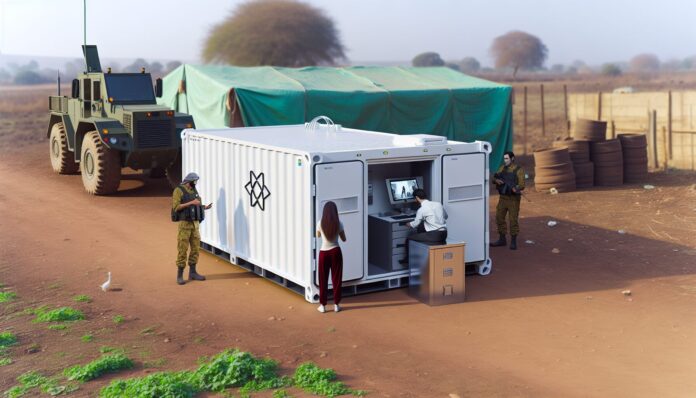German engineering continues to push the boundaries of additive manufacturing with the unveiling of a mobile 3D printing system designed for field deployment. This innovative solution allows for the on-site production of spare parts, tools, and components in remote or combat environments, significantly reducing downtime and logistical challenges.
Mobile 3D Printing for On-Demand Manufacturing
The mobile 3D printing system, developed by a consortium of German companies, is housed within a standard ISO container, making it easily transportable by truck, rail, or air. The containerized unit is fully equipped with a 3D printer, post-processing tools, and a digital inventory system, enabling users to manufacture parts on demand without needing access to traditional supply chains.
This capability is particularly valuable for military operations, disaster relief missions, and remote industrial sites where access to spare parts can be limited or delayed. By producing components directly at the point of need, the system enhances operational readiness and reduces the logistical burden of carrying large inventories.
Technical Features and Capabilities
The mobile unit includes a high-performance industrial 3D printer capable of processing a range of materials, including high-strength polymers and metal powders. The system supports both Fused Filament Fabrication (FFF) and Selective Laser Melting (SLM) technologies, offering flexibility depending on the application requirements.
In addition to the printer, the container features a climate-controlled environment, power supply, and integrated software for part design and optimization. The digital inventory system allows users to access a library of pre-approved part files, ensuring quality and consistency in production. The entire setup is designed for rapid deployment and can be operational within hours of arrival on-site.
Applications in Defense and Beyond
While the primary target for this mobile 3D printing system is the defense sector, its applications extend far beyond the battlefield. Humanitarian aid organizations, oil and gas companies, and remote construction projects can all benefit from the ability to produce critical components on-site. In disaster zones, for example, the system could be used to fabricate medical devices, water purification parts, or structural connectors for temporary shelters.
For military users, the system offers a strategic advantage by enabling the repair and maintenance of vehicles, weapons, and equipment without waiting for parts to be shipped from centralized depots. This not only improves mission continuity but also reduces the risk associated with long supply lines in hostile environments.
Germany’s Commitment to Additive Manufacturing Innovation
Germany has long been a leader in industrial manufacturing and engineering, and this mobile 3D printing initiative underscores the country’s commitment to innovation in additive manufacturing. The project is supported by the German Ministry of Defense and aligns with broader efforts to modernize logistics and maintenance capabilities through digital technologies.
As additive manufacturing continues to evolve, mobile systems like this one represent a significant step toward decentralized, agile production models. By bringing the factory to the field, German companies are helping to redefine how and where manufacturing can take place.
Source: Defence Blog

